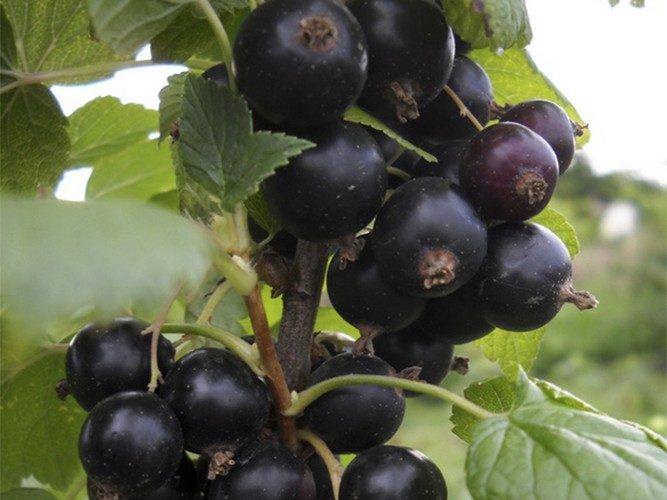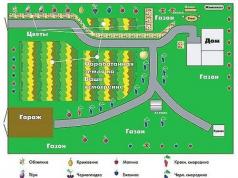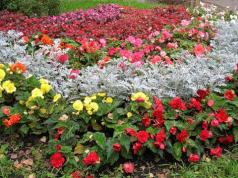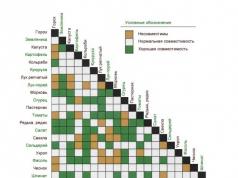Every gardener wants to grow only the best varieties of plants in his garden plot. To get good blackcurrant crops on your site, it is recommended that you read the article.
Despite the advice of experts to plant only zoned currant varieties, gardeners prefer the largest and sweetest varieties. Fortunately, breeders are not sitting idle, and now blackcurrants can grow in every region, varieties of super large, sweet and fruitful (description, photo) berries can now be grown very simply.
Variety Bagheera - blackcurrant
Bagheera - sweet currant, medium ripening, medium-sized bush 1 - 1.5 m high. The berries are relatively large, ripen together and do not crumble for a long time, sugar - 9 - 12%, ascorbic acid (vitamin C) 155 - 190 mg per 100 g . Begins to bear fruit the next year after planting. The variety is very winter-hardy, tolerates heat, drought, moderately resistant to diseases. Productivity 3 - 4.5 kg. berries from 1 bush. Fruit weight 1.1 - 2.2 gr. Blooms in the second decade of May. Harvest ripens in mid-July.
Advantages: excellent drought resistance and frost resistance, sweet, tasty berries that ripen together and are well transported.
Disadvantages: resistance to powdery mildew, anthracnose, bud mites is average.
Variety Vigorous - mid-ripening black currant

A variety with large berries weighing up to 6 g. Berries are collected in clusters of 8-10 pieces. Thus, the weight of one brush can reach 60 g. And 20 good brushes can make up more than 1 kilogram of the crop.
The yield indicator is 6 kg of berries per bush per year. Their taste is sweet with sourness (they contain 9% sugar and only 3.5% acid - for comparison, sweet varieties of sugars have almost the same amount - from 10%), the peel is dense. Bushes grow up to 1.5 m in height.
Vigorous - a well-deserved record holder among large blackcurrant varieties. She needs an annual rejuvenation. The branches are greatly depleted during the fruiting season, therefore they require cutting and replacing with new pagons.
What you need to know the disadvantages: different sizes of berries, their size may vary. Another drawback is that the bush is aging and needs to be replaced after a few years. The number of years of good fruiting depends on the quality of care. With good soil and sufficient watering, bushes can retain yields of 6-7 years.
Variety Excellent blackcurrant

According to the results of many years of research conducted by specialists of the All-Russian Research Institute for the Selection of Fruit Crops, this variety leads the top three in terms of sugar content in berries (11.1%). The bushes are quite tall, sprawling and dense. The berries are coal-black, large, with a slight sourness. The variety is moderately hardy, resistant to spring frosts. But his ability to resist diseases and pests is average.
Variety Nina-blackcurrant

In terms of sugar content in berries (11%), Nina is only slightly inferior to Excellent. This is a medium-early variety that bears fruit abundantly. The bushes are low, dense, form a lot of basal shoots. The berries are quite large, up to 1.3 cm in diameter, rounded and one-dimensional. 100 g contains 180-270 mg of ascorbic acid, which is equal to 2-3 daily intakes for an adult. But, unfortunately, this currant is not stored or transported for a long time. Among the positive characteristics of the variety, we also note winter hardiness, self-fertility and resistance to powdery mildew.
Latest articles about gardening and gardening
Variety Dachnitsa - blackcurrant

Summer resident - more suitable for the European regions of Russia. This type of currant is distinguished by high yields, large-sized berries (from two to three and a half grams), and short ripening periods. The bushes are so short in size that, with abundant harvests, the branches are adjacent to the surface of the earth. Berries have good taste qualities, without characteristic sourness. Their ripening is uneven, which makes it possible to harvest for a long period. The variety is known for its resistance to powdery mildew and anthracnose, as well as rust and bud mites.
Variety Exotic - black currant

Exotic - refers to varieties that have large berries, fully ripens in the regions of the middle lane. The variety was bred as a result of crossing Blueberry Seedling and Bredthorpe. The weight of the berries reaches three grams, their taste is sour-sweet, the skin is shiny. The berries, when separated from the branches, remain dry, are collected easily and quickly, and can be stored in the refrigerator for several days. The bush gives a high yield, is characterized by medium growth and straight forms of branches, not too dense. The foliage is large-sized, the axis of the berry brush is straight. Up to ten berries are tied on it. It resists powdery mildew, but is affected by anthracnose. The variety tolerates winter cold very well. The yield is not very high - one bush gives up to a kilogram of berries, which are distinguished by manufacturability.
Variety "Dobrynya" - blackcurrant

It belongs to a large-fruited variety of blackcurrant, has an average ripening period. The weight of the berry is 3-7 g, the size of the fruit is not uniform, different. The pulp has a sweet and sour taste, the skin is firm. In 100 gr. berries 200 mg of vitamin C, sugar content - 6.9%.
The plant is medium in size, the height of the bush is from 1.1 to 1.6 m. "Dobrynya" tolerates frost and drought well, resistant to the spread of powdery mildew. From one shoot per season, you can harvest from 1.7 to 2.5 kg of crop. The flowering period begins in mid-May. The first crop is harvested in the second half of July.
Advantages:
- Large and tasty fruits;
- Medium sized plant;
- It tolerates frost and drought well;
- Not susceptible to the spread of powdery mildew.
- Average yield;
- Non-one-dimensionality of berries;
- Susceptible to bud mites and anthracnose.
Variety "Green haze" - blackcurrant

Representatives of the species have an average ripening period. The plant bears fruit only a year after planting. The bush is not very tall, medium sprawling. Currant has a pleasant aroma, one berry weighs from 1.6 to 2.6 grams. 10 grams of pulp contains 193 mg. vitamin C, and sugar - 12.3%. "Green haze" tolerates low temperatures well and does not suffer from powdery mildew. From one shoot per season, you can collect from 4.1 to 5 kg of crop. The plant begins to bloom in the second half of May. A mature crop can be harvested in mid-summer.
Latest articles about gardening and gardening
Advantages:
- Tasty and sweet berry;
- yield;
- Frost resistance;
- Refers to fast-growing species.
- May be severely affected by bud mites.
Variety Selechenskaya - 2 - blackcurrant

Selechenskaya - 2 currants with very large and tasty berries (up to 6 gr.). The taste is sweet with sourness, the sugar content is 7.3%, ascorbic acid is 160 mg. per 100 gr. Early ripening, bush is tall, upright 1.5 - 1.8 m. The variety is winter-hardy, easily tolerates drought, resistant to powdery mildew. Productivity is from 2.5 to 5 kg. large berries from 1 bush. The mass of berries is from 3 to 6 gr. Blooms in the first decade of May. Harvest ripens in the first decade of July. Advantages: large, tasty (considered one of the most delicious) berries, winter hardiness, resistance to powdery mildew, good yield.
Disadvantages: average resistance to bud mites, anthracnose.
Variety Batka minai - blackcurrant

Early variety of blackcurrant, self-fertile. Resistant to frost and frequent weather changes, needs abundant watering. It is immune to almost all diseases. Low-yielding. The bushes are compact, dense and tall. The leaves are large and green. Berries are round, matte black when ripe. Separation is dry. The taste is sweet and sour. The variety is suitable for long-term storage in the freezer.
Variety Delicacy - blackcurrant

Mid-season variety of blackcurrant, self-fertility is very low. This variety is excellent for the difficult weather conditions of the Urals, as it has excellent resistance to frost, and is practically immune to diseases. Needs abundant watering. Plants are tall, medium sprawling, very dense. The leaves are small but dense. The brushes are thin and long. The berries are medium-sized, flattened, black when ripe. The taste is sweet, dessert. Widely used in cooking and canning.
Variety Black pearl - black currant
It is characterized by a spreading bush of medium height and rarely growing leaves. Rounded black berries with a hard skin weighing up to one and a half grams with a "pearl" sheen reach a diameter of up to 7 cm.
It is characterized by high winter hardiness, early maturity, productivity, moderate resistance to diseases.
This large-fruited variety is characterized by stable fruiting, a high content of healing vitamin C, pectin. Well suited for manual and mechanized fruit picking in mid-July.
Latest articles about gardening and gardening
Early varieties of blackcurrant
Those who wish to enjoy healthy berries from the beginning of June, when some types of currants are just blooming, should pay attention to early ripening varieties:
Currant - early ripening currant (mid-June) with large and tasty fruits, self-fertile, resistant to cold, but susceptible to damage by bud mites;
The Little Prince is a cold-resistant currant of early ripening (mid-June), the fruits are small (2-3 g), quite tasty (sugar content 10.7%), disease resistant, but can be affected by bud mites;
Overture - currant of a very early ripening period (early June), dense clusters, consisting of 10-15 small fruits (up to 2 g), resistant to cold and disease, bred at VNIIR them. Vavilov as a universal highly productive crop suitable for growing in the non-chernozem zone;
Nara - the time of full ripening comes in mid-June, resistant to cold, drought, fungal diseases, mites, medium-sized fruits (2-3 g), juicy with a sweet and sour taste.
Whichever currant you choose, it is important to know that maximum productivity is maintained for the first 7-10 years. Then the fruits become small, and the bush itself gradually degenerates. In order to receive an abundant harvest of a useful product every year, it is necessary to regularly cut branches that are more than three years old. Thus, the shoots will be regularly updated and give a high yield.








